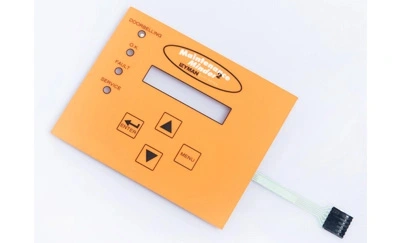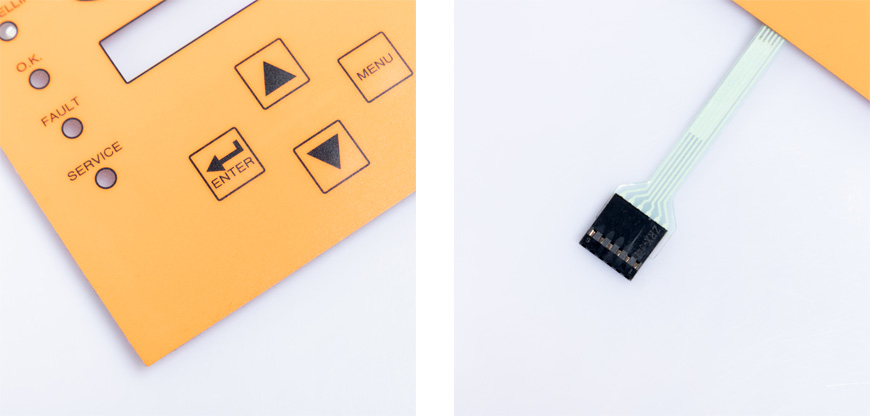
In today's fast-paced technological landscape, standard membrane switches have become an integral part of various electronic devices, from kitchen appliances to industrial machinery. These versatile components are often overlooked, yet they play a crucial role in ensuring user interaction and device functionality. In this article, we'll delve into the world of standard membrane switches, exploring their construction, applications, advantages, and future prospects.

1. Introduction
2. What Is a Membrane Switch?
3. Components of a Standard Membrane Switch
The Top Graphic Layer
The Spacer Layer
The Bottom Circuit Layer
4. How Do Membrane Switches Work?
5. Advantages of Standard Membrane Switches
Durability and Longevity
Customization Options
Cost-Effectiveness
6. Applications of Standard Membrane Switches
Consumer Electronics
Medical Devices
Industrial Control Panels
7. Future Innovations and Trends
8. The Role of Membrane Switches in User Experience
9. Common Challenges and How to Overcome Them
10. Maintenance and Care Tips
11. Conclusion
12. FAQs
Membrane switches have quietly revolutionized the way we interact with electronic devices. From the buttons on your microwave to the control panels in advanced machinery, these switches provide a tactile interface for users to operate equipment efficiently. In this article, we will explore the ins and outs of standard membrane switches, shedding light on their components, functionality, applications, and much more.
A membrane switch is a low-profile, versatile user interface that consists of multiple layers of flexible materials. These layers work in unison to provide a responsive and reliable input method. Standard membrane switches are typically made up of three key components.
1. The Top Graphic Layer
The top layer of a standard membrane switch is the graphic interface, often made of polyester or polycarbonate. This layer displays the buttons or functions and is printed with icons, labels, or graphics.
2. The Spacer Layer
Beneath the top graphic layer, there is a spacer layer. This layer contains holes or apertures that align with the button positions on the top layer. It provides a separation between the top graphic layer and the circuit layer below.
3. The Bottom Circuit Layer
The bottom circuit layer is the most critical component of a membrane switch. It is a printed circuit board (PCB) that contains conductive traces and contact points. When a user presses a button on the top layer, it makes contact with the circuit layer, completing the electrical circuit and registering the input.
The operation of a standard membrane switch is elegantly simple. When a user applies pressure to a button on the top layer, the top layer deforms and makes contact with the circuit layer beneath it. This contact triggers the switch, sending an electrical signal to the connected device. Membrane switches are known for their tactile feedback and reliability, making them ideal for various applications.
Standard membrane switches offer a range of advantages that contribute to their widespread use in the electronics industry:
1. Durability and Longevity
Membrane switches are designed to withstand millions of actuations, ensuring longevity and consistent performance. They are resistant to environmental factors such as dust, moisture, and chemicals.
2. Customization Options
Manufacturers can easily customize the appearance of membrane switches by altering the graphic layer. This flexibility allows for branding and design considerations.
3. Cost-Effectiveness
Compared to traditional mechanical switches, membrane switches are cost-effective to produce and install, making them an attractive choice for manufacturers.
Standard membrane switches find applications in a wide range of industries:
1. Consumer Electronics
Devices like microwave ovens, remote controls, and gaming consoles frequently incorporate membrane switches for user interface functions.
2. Medical Devices
In medical equipment such as patient monitoring devices and diagnostic machines, membrane switches offer a hygienic and responsive interface.
3. Industrial Control Panels
Industrial machinery relies on membrane switches for their robustness and suitability in harsh environments.
As technology continues to evolve, so do membrane switches. Future innovations may include thinner and more flexible designs, enhanced tactile feedback, and integration with emerging technologies such as touchscreens and haptic feedback systems.
A well-designed membrane switch can significantly enhance the overall user experience by providing responsive feedback and intuitive operation.
While membrane switches are robust, they can face challenges such as wear and tear. Regular maintenance and proper care can extend their lifespan.
To ensure the longevity of membrane switches, it's essential to keep them clean and free from debris. Use a soft, non-abrasive cloth and mild cleaning solutions to gently wipe the surface.
In conclusion, standard membrane switches are the unsung heroes of user interaction in electronic devices. Their durability, versatility, and cost-effectiveness make them indispensable components across various industries. As technology continues to advance, we can expect even more innovative applications for membrane switches in the future.
Are membrane switches only used in electronics?
No, membrane switches find applications in various industries, including medical and industrial sectors.
How long do membrane switches typically last?
Membrane switches are designed to last for millions of actuations, ensuring long-term durability.
Can membrane switches be customized with specific graphics or icons?
Yes, manufacturers can customize the graphic layer of membrane switches to display specific graphics, labels, or icons.
What maintenance is required for membrane switches?
Regular cleaning with a soft cloth and mild cleaning solutions can help maintain membrane switches.
Are membrane switches suitable for outdoor use?
Membrane switches can be designed to be resistant to environmental factors, making them suitable for outdoor use in some cases.